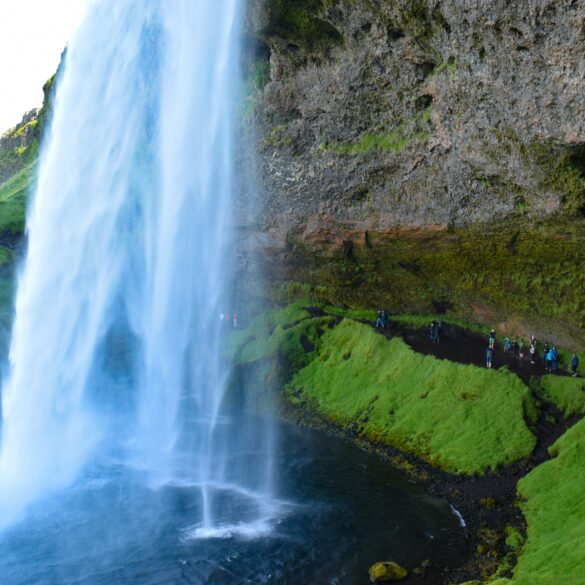2016 was, among other things, a year of castles for us.
Turns out we got to see a total of 28 castles in 8 different countries, which so far is a record for us.
Some castles were ruins with almost nothing left and others were very well-preserved, and some of the castles were not even castles in the true sense of the word.
At the beginning of the year, we started off with a visit to the Schlosspark Biebrich in Germany (country #1), which is close to where we live although we’d never been there.

The Mosburg was once part of a 13th-century fortress that later fell into ruins.
In 1804, the soon-to-be Duke of Nassau obtained the ruins and turned them into a residential castle.
The “new” castle was built to look like ruins. In an example of art imitating life, the Mosburg once again became real-life ruins during World War II.
Restoration work was begun on the castle in 1979 and is still ongoing. Today there is a Mosburg Festival held every year, the proceeds of which go towards the restoration.
The interior is currently not open to the public but you can walk right up to the castle and peek inside.
A couple of weeks later we went to Milan, Italy (country #2) for a long weekend where we saw the Sforza Castle.

Built in the 15th century, it was expanded during later centuries and eventually became one of the largest fortresses in Europe.
It now houses several museums, one of which contains Michelangelo’s last sculpture.
It’s free to walk around the grounds if you don’t want to go into the museums, and there is also a café on the grounds. Keep an eye out for the cat colonies that live around the castle but don’t try to catch them. They are feral but well-fed and cared for.
About two weeks after the Milan trip, we went to the town of Ober Ingelheim in Germany.
There we saw what’s called the Burgkirche or “castle church”.
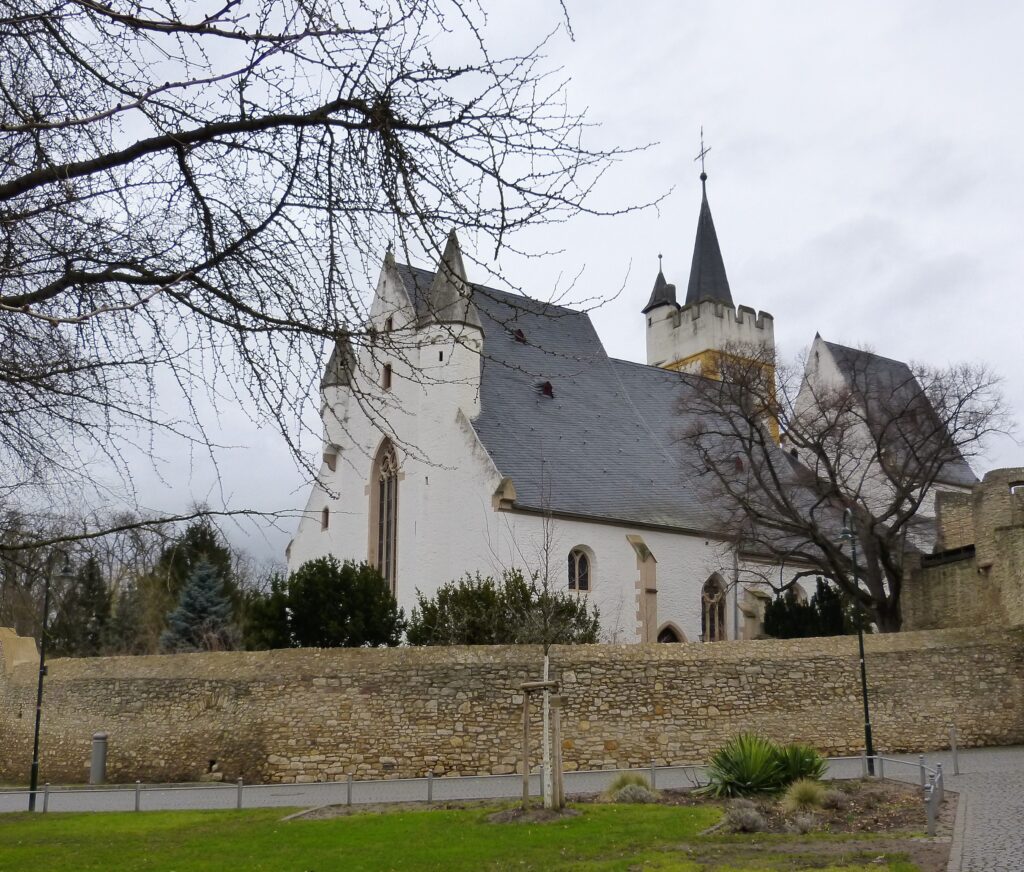
This type of church is commonly called a fortified church.
You can see that it’s surrounded by defensive walls. This would have allowed the townspeople to retreat to the church in the event of an attack, which in the case of Ober Ingelheim luckily never happened.
You can also see the tower that looks like it could belong to an actual castle.
At the end of February we found out that there is a castle in Wiesbaden, Germany.
I work in Wiesbaden and can’t tell you how many times we’d been to the city in the last five years without ever knowing there was a castle there.
As soon as I found out, we made trip.

Burg Sonnenberg, built in the year 1200, is in ruins so there is not too much to see. I love walking around ruins though and trying to imagine what they would have been like in their heyday.
There is actually a fairly fancy restaurant on site and theatrical performances take place at the ruins during the summer.
The same day we went to Burg Sonnenberg, we drove over to Rüsselsheim, Germany and ended up at the Verna-Park.
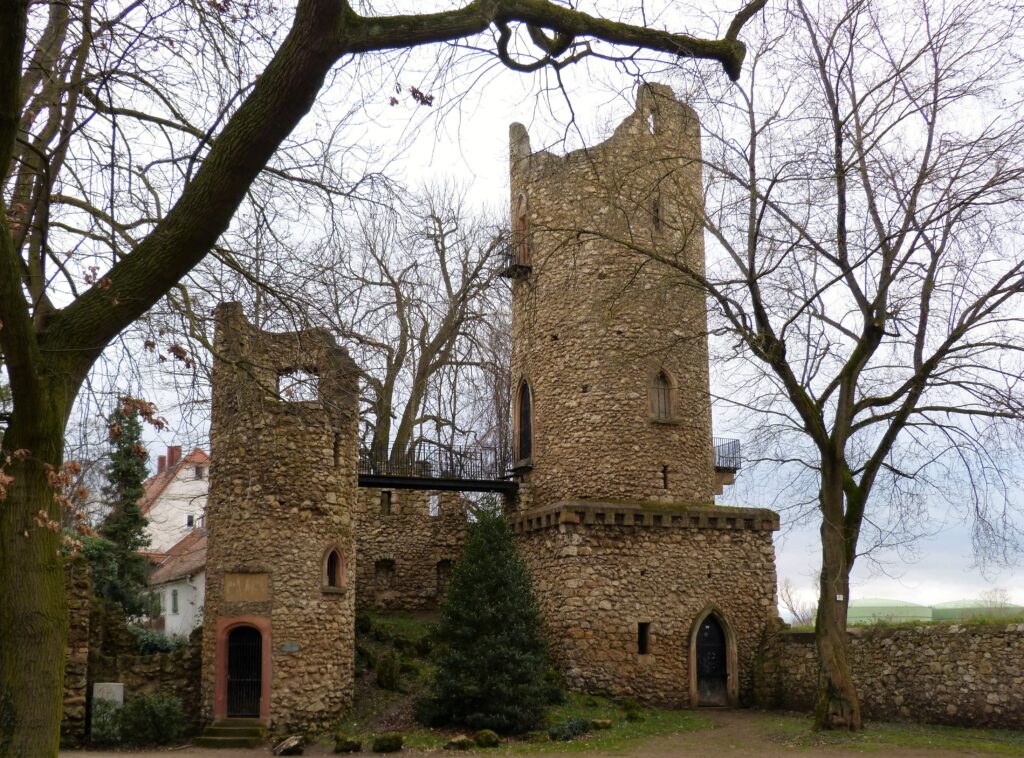
Like the Mosburg, these are artificial ruins as well although they once served as a residence. That seems to have been a big thing in the 1800s.
In early March we took a friend to the Frankenstein Castle in Darmstadt, Germany.
I didn’t actually take any photos on that trip because I’d been to the castle several times before, so this photo is from a previous trip.
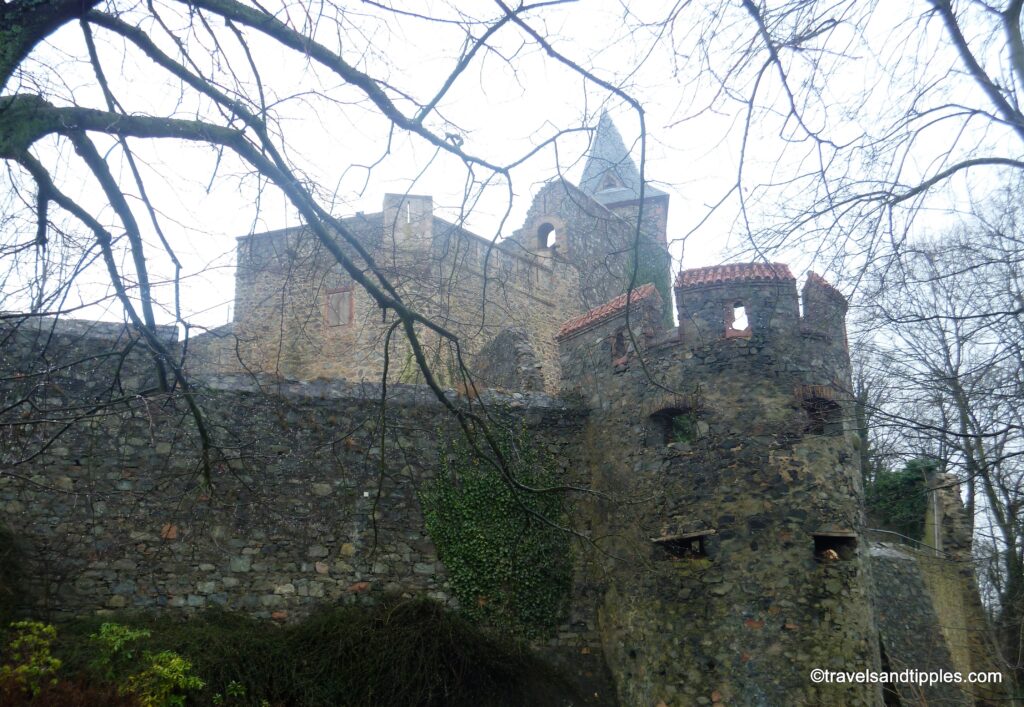
This castle was supposedly the inspiration for Mary Shelley, when she saw it on a trip through Germany, to write the novel Frankenstein.
It was built in the 13th century and fell into ruins in the 18th century. Parts of the castle were reconstructed in the 19th century
In mid-March we took a trip to Ireland and to Northern Ireland in the United Kingdom countries #3 and 4), where we saw the next seven castles.
The first was Dunluce Castle.

Dunluce is also in ruins but it has the most gorgeous views of any castle I’ve ever seen.
Fun fact: Dunluce is pictured on the inner sleeve of the Led Zeppelin album Houses of the Holy.
Later that day we stopped at Dunseverick Castle.

What you see in the photo is all that’s left of the castle.
It’s unknown when it was built, but St. Patrick visited there in the 5th century so it’s pretty darn old.
I was surprised we had the place to ourselves because Dunseverick was used as a Game of Thrones filming location.
We stopped at this next castle because we saw a “For Sale” sign in front of the property!
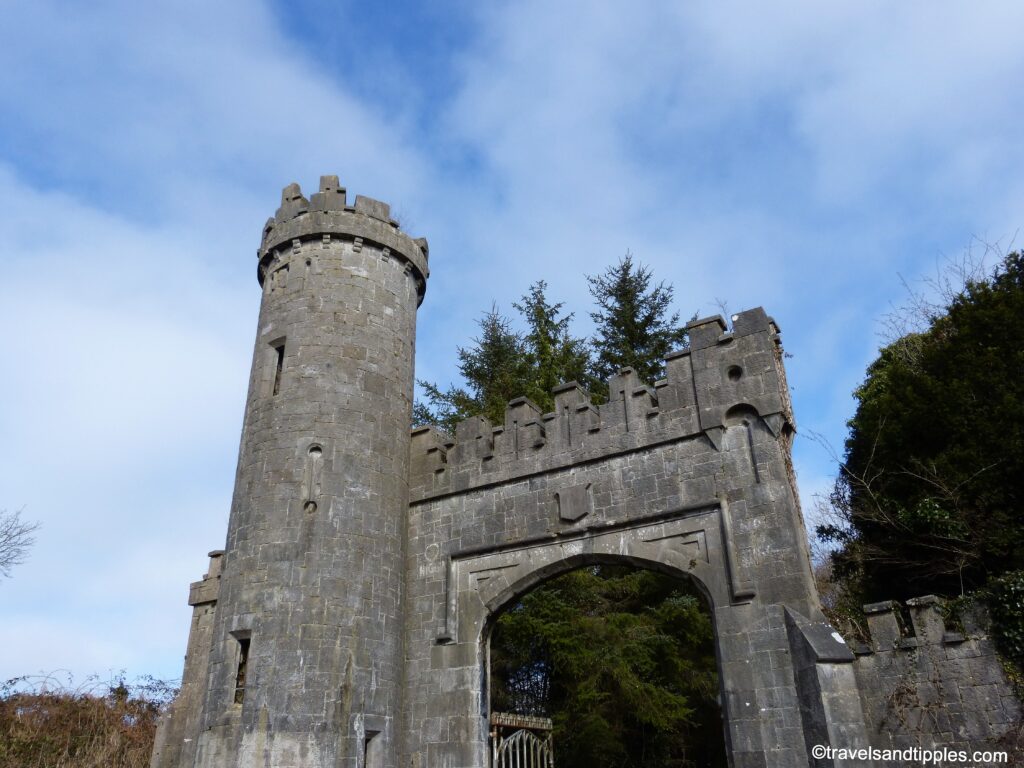
The gateway tower is all that’s left of Camlin Castle, which was tragically and mistakenly demolished in the 1940s/1950s.
The property that’s it’s on is lakefront and is absolutely gorgeous. I was tempted at the time to buy it and more than a year later it’s still for sale. I’m still tempted.
Our next stop was Tully Castle, which has a tragic history..
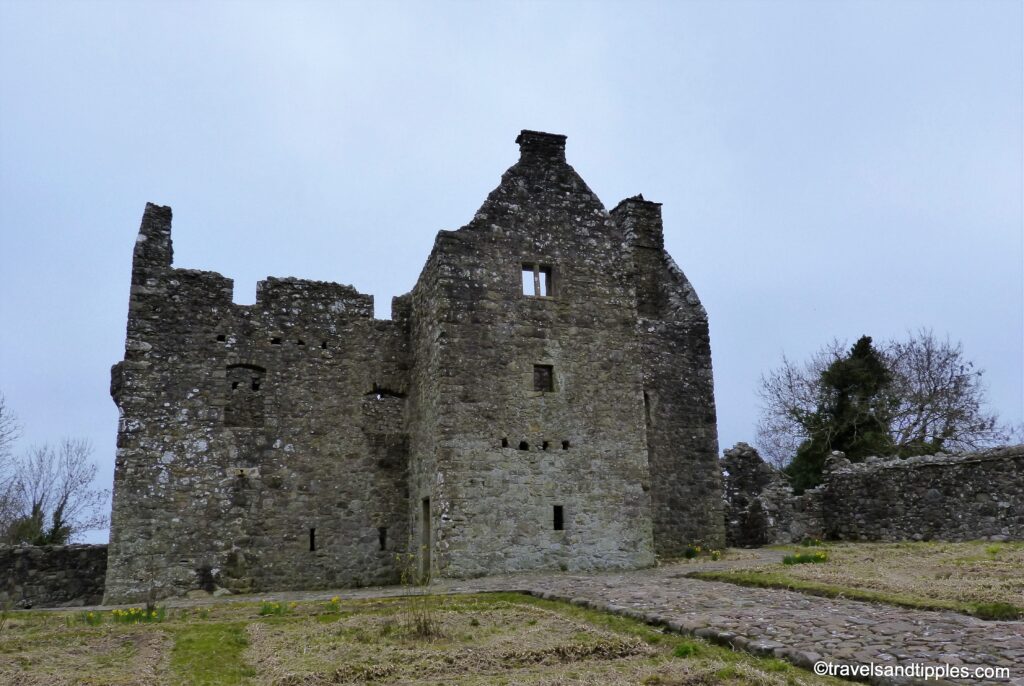
In 1612, Sir John Hume had this castle built. He also built a village for 24 tenant families.
During the Irish Rebellion of 1641, all but 16 men from the castle and the village were away fighting.
Rory Maguire, a rebel leader, and his followers arrived at Tully Castle on Christmas Eve that year.
On Christmas Day, after murdering the 85 remaining villagers – including children – the rebels burned the castle down.
Only Lady Hume and her family were spared.
After being inhabited for less than 30 years, the castle lay in ruins restoration work was done in the 1970s.
Next we visited the ruins of Old Crom Castle.
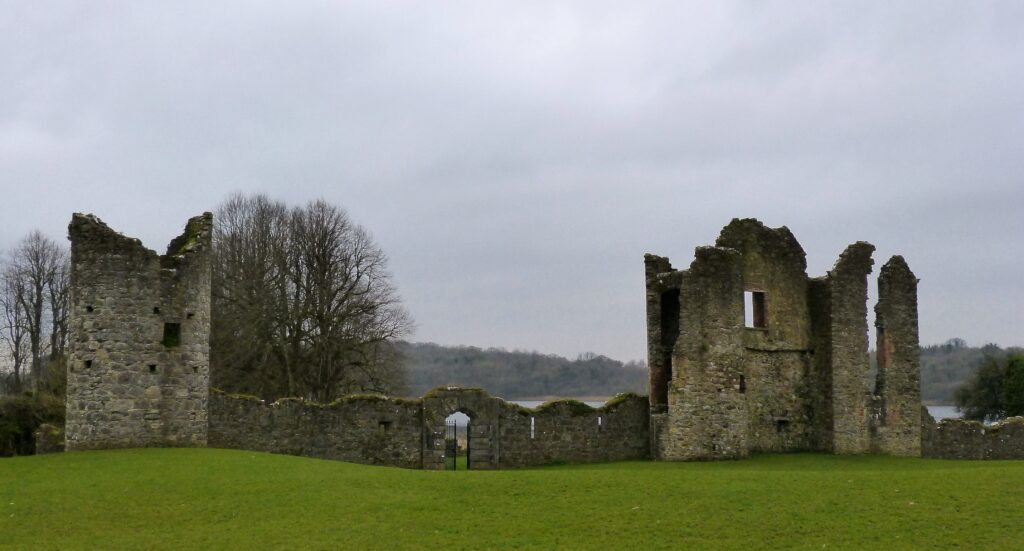
This castle sadly burned down as well, although it was accidental.
Originally built in the early 1600s by a man named Michael Balfour, the Crichton family took ownership in 1655. The accidental fire in 1764 destroyed the castle.
In the 1800s, towers and walls were added to the castle for aesthetic purposes.
There is a magnificent pair of conjoined yew trees on the property, which made the list of 50 Greatest British Trees (the castle is in Northern Ireland). The list was drawn up for the Queen’s Golden Jubilee in 2002.
Castle Balfour, also in Northern Ireland, is noted not so much for the actual castle as it is for the cemetery in front of it.

Balfour was also built in the early 1600s and is named after the original owner, Lord Balfour.
Want to take a guess at how this castle was destroyed?
If you said by fire, you win!
It appears that it was actually destroyed twice by fire. The first time was during the Irish Rebellion of 1641, the same as Tully Castle. It was rebuilt but then destroyed by arson in 1803.
It was owned at the time by James Haire, whose mother died in the fire. A member of the Maguire clan was blamed for the act. I’m wondering if there is any relation to the Rory Maguire who burned down Tully Castle.
The last castle we saw on that trip was Donegal Castle.

This one was built by Red Hugh O’Donnell in 1474.
It seems a little unnecessary to say this at this point, but this castle was demolished by fire.
In 1595, another Red Hugh O’Donnell burnt the place down himself to prevent it from falling into the hands of the English.
Unfortunately his plan ultimately failed. The castle was later granted to Captain Basil Brooke of the English Army for his service to the Crown.
Ol’ Basil rebuilt the castle in the early 1600s. This one is not in ruins and you can tour interior rooms that have furnishings and decorations.
Back in Germany, we went to a castle in the middle of the Rhine River.
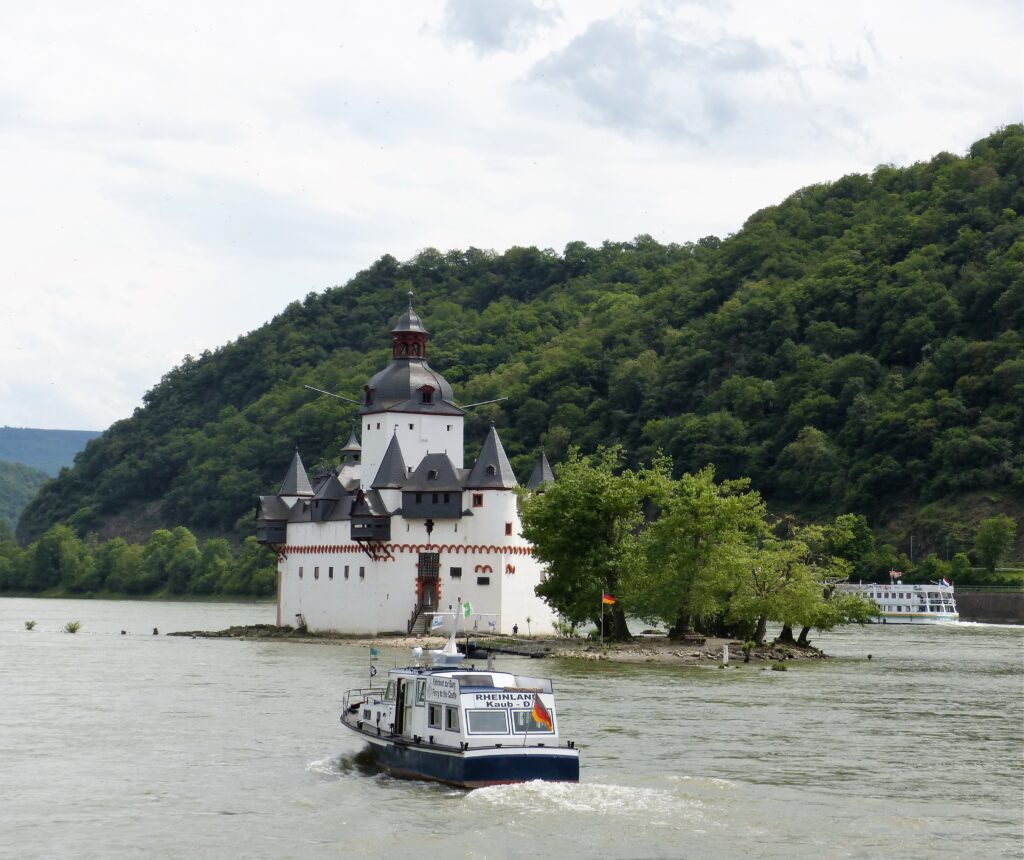
To reach the Zollburg (toll castle) Pfalzgrafenstein, you go to the town of Kaub and take the small ferry you see in the photo.
The trip takes less than 5 minutes.
The castle was originally built in the 1300s to collect tolls. There was a chain across the river between Pfalzgrafenstein and another castle to “encourage” ships to stop and pay the toll.
Those who were not so easily encouraged were thrown in the dungeon until they changed their minds.
Once you pay the entrance fee you can get a handout in English to read as you explore the castle at your own pace.
During a trip to the picturesque town of Český Krumlov in the Czech Republic (country #5), we spent a day at the State Castle there.
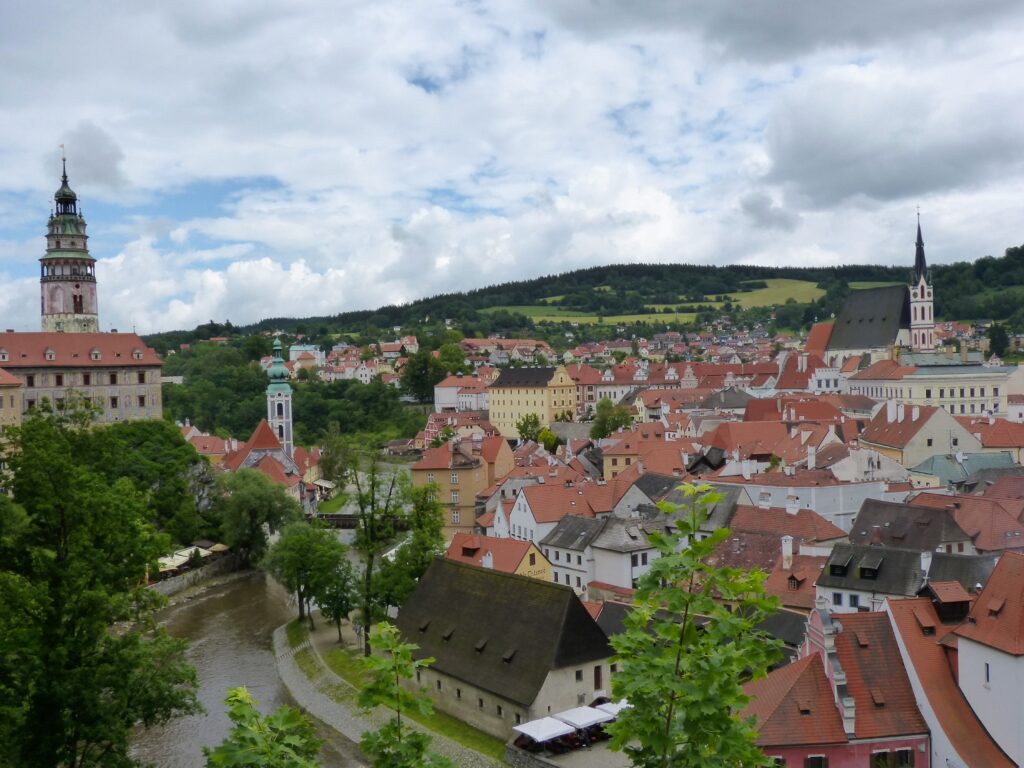
The best part of the castle complex, one of the largest in Europe, is the views.
That photo was taken from the castle wall, and the high tower you see on the left is part of the castle.
The State Castle dates back to the 13th century and it was added on to over the next few centuries.
While you can visit the interior only as part of a guided tour, the gardens are free to visit and they are absolutely gorgeous.
A few weeks later we were in Switzerland (country #6) for a long weekend and we checked out the Chillon Castle, which is always on lists of must-see castles.
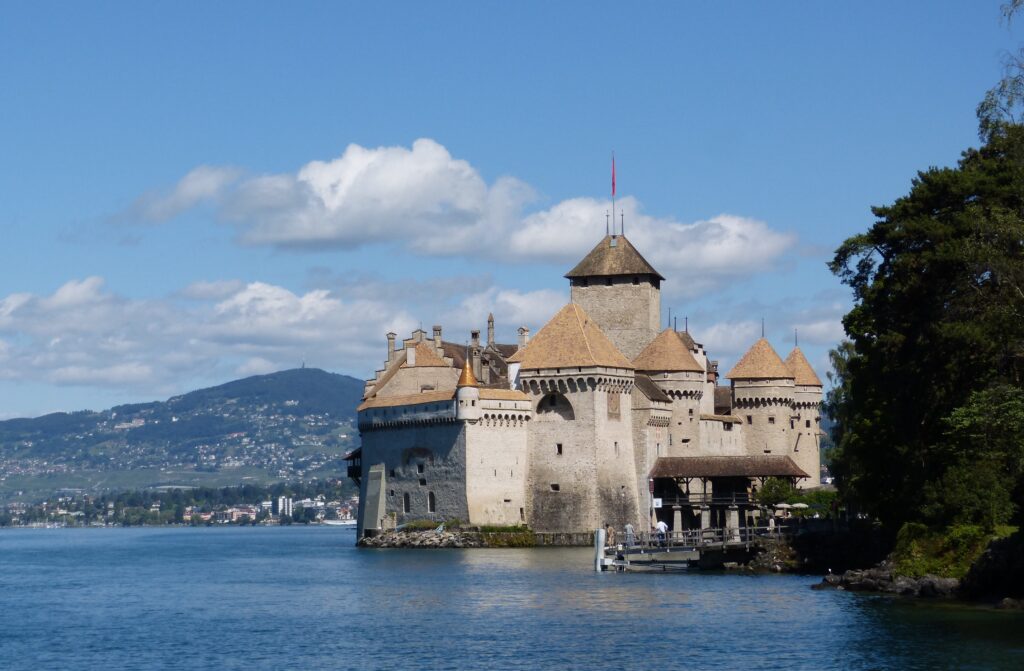
Chillon is located on Lake Geneva. The first mention of the castle was over 1,000 years ago in the year 1005, but the site its built on has been occupied since The Bronze Age.
This is another castle that you explore at your own pace, and it’s another one where the views from the castle are incredible.
If you want to visit I recommend that you go as soon as it opens for the day. It’s one of the biggest attractions in Switzerland and it gets packed pretty quickly.
Fun fact – Chillon was supposedly the model for the castle in the Disney film The Little Mermaid.
Not long after returning from Switzerland, we did a day trip to the town of Traber-Trarbach in Germany. Grevenburg Castle is situated above that town.
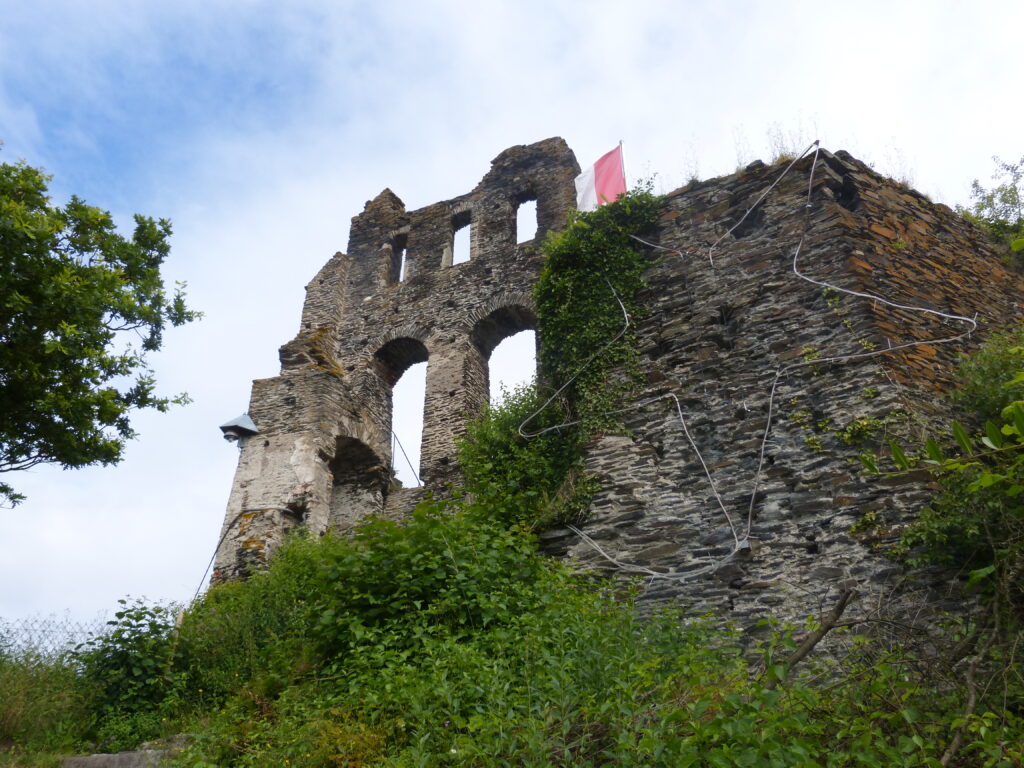
It was built between 1350 and 1357, and for a few hundred years all was well.
But then over the next 100 years or so, everyone wanted that castle. It was taken by Spain, Sweden, France three times (King Louis XIV stayed there the second time, in 1681), the Netherlands twice and Denmark. In between all that it was recaptured by Germany several times.
The French took the castle a fourth and final time in 1734 and blew it up. I guess they’d had enough.
There’s not much left of it now and you are free to explore the ruins at no cost.
There is a restaurant on site where we sat outside and had a drink. One of my favorite things to do in Germany is have a drink at a castle and this one is one of the best for doing that.
In August we went to Scotland for the yearly Royal Edinburgh Military Tattoo that takes place at the Edinburgh Castle.

The photo is actually from a trip to Edinburgh the previous August and it was taken from the top of a Ferris wheel.
The Edinburgh Castle dates back to at least the 1100s, but there are few remaining parts from the earlier centuries.
If you go, try to be there at 1:00 in the afternoon when the aptly-named One O’Clock Gun is fired. It was originally a time signal for ships and is now fired off for the amusement of tourists.
The weekend after we got back from Edinburgh we hit three castles in one weekend in Germany.
The first was Rheinstein Castle.

This one was special because the woman who sold us our entry tickets is actually part of the Hecher family, who has owned the castle since 1975.
Rheinstein has particularly magnificent views of the Rhine River.
There is also a little area called the Burgundy Garden, named after the type of grape vine that grows there which is still producing grapes after almost 500 years. You can rent out the garden for events and in fact it was closed off for a party the day we visited.
If you want to live like royalty for a couple of days, there are two apartments in the castle available for overnight stays. The minimum stay is two nights.
Finally, there is a restaurant on site but you must have a ticket to the castle to eat there.
After leaving Rheinstein, we drove down the road about 10 minutes to go to the Klopp Castle.
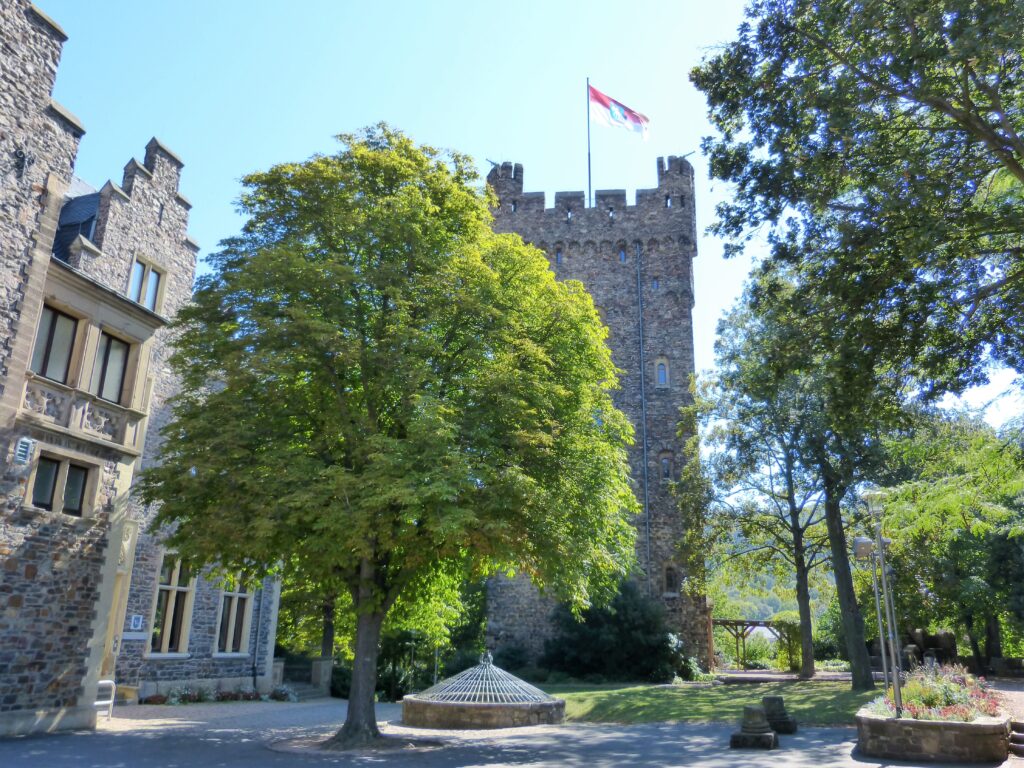
Built in the 13th century, the castle was destroyed multiple times over the next several hundred years.
There is very little left of the original castle. Although the tower you see in the photo was reconstructed, the base is original. You can climb to the top of the tower for free and you’ll be rewarded with some lovely Rhine River views.
The town of Bingen now owns the castle and uses part of it for administrative offices.
Unfortunately the town itself is not the prettiest, so you’ll have to overlook that if you climb the tower.
There is a restaurant at Klopp Castle as well, and we had a bite to eat and something to drink there before heading home.
The following day we toured Sooneck Castle.

Like its neighbors along the Rhine, Sooneck was destroyed and was in ruins by the 19th century.
This castle can be visited only as part of an organized tour, which is conducted in German.
They do have English handouts so you can read about the history and the various rooms while you’re on the tour.
There is restaurant on-site at this castle where I would have loved to have had at least a drink. Unfortunately it was an unbearably hot day and there were no seats in the shade (outdoor seating only), so we passed.
The next castle we came across was in Annecy, France (country #7).
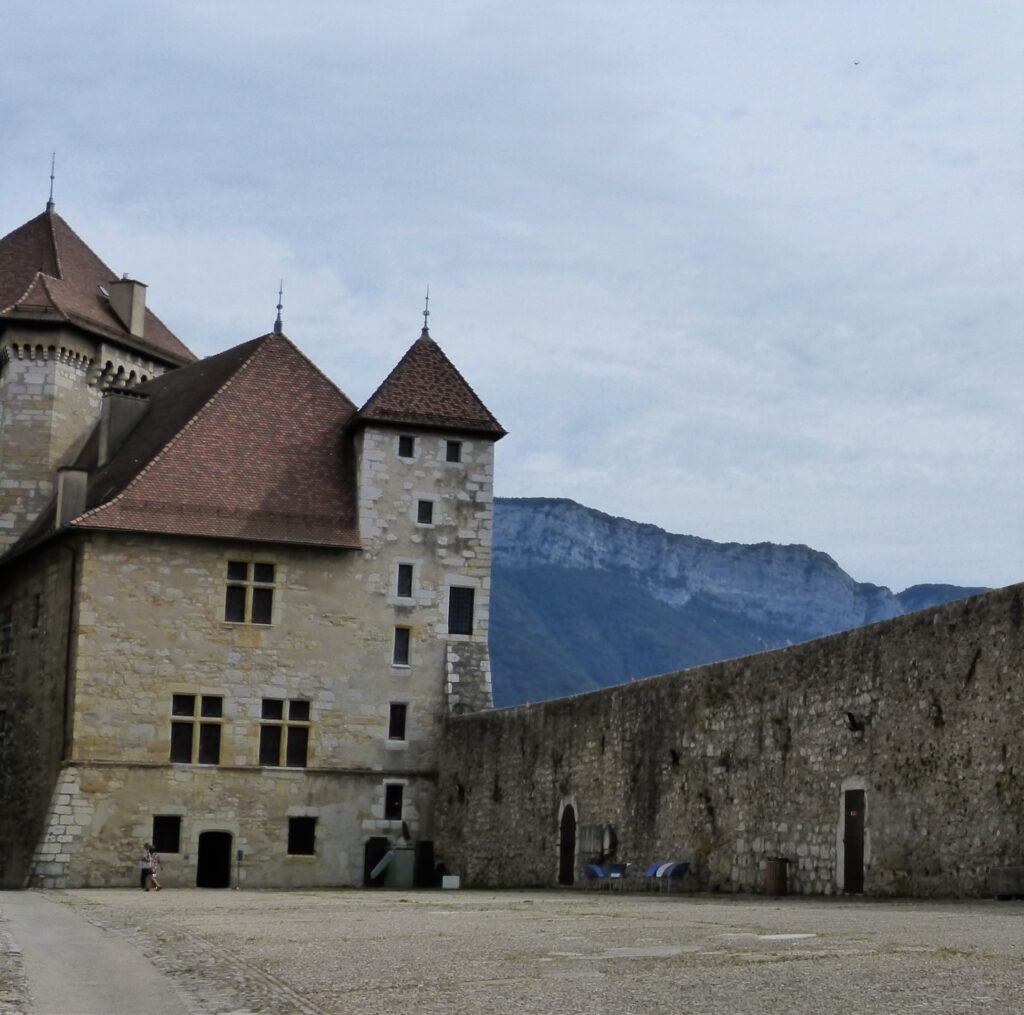
The Château d’Annecy was built starting in the 12th century.
Destroyed by several fires over the centuries, it was finally abandoned in the 1600s.
It was later restored and finally the town of Annecy bought it in 1953.
It now houses a museum.
Going back to Germany, we once again hit two castles in one day.
The first was Mespelbrunn Castle, which I’d wanted to see for a while because it’s a moated castle.

It was originally built and owned by the Echter family in the early 1400s. When the last male member of that family died in 1655, a female named Maria married Philipp Ludwig, one of the Counts of Ingelheim.
The Counts still own the castle today, and live in a section of it that’s not open to the public.
The interior of the castle can be viewed only as part of guided tour. At first we were the only two on the tour and the guide started to give it in German.
However, some German-speaking people then joined the tour and the guide explained to us that she was then required to give the tour in German. We did have a handout in English though.
There is a small café in the former horse stables near the castle.
You can also stay in the old mill house on the grounds, which accommodates up to four people.
Near the parking lot for the castle is additional lodging at the Schlosshotel Mespelbrunn.
Mr. Tipples and I had met a friend at the castle and she wanted to have lunch at the Schlosshotel’s restaurant after the tour.
Because she had her own car with her, Mr. Tipples decided to leave us to our own devices and he headed on home.
After lunch, my friend I and stopped at the Lichtenberg Castle on the way home.
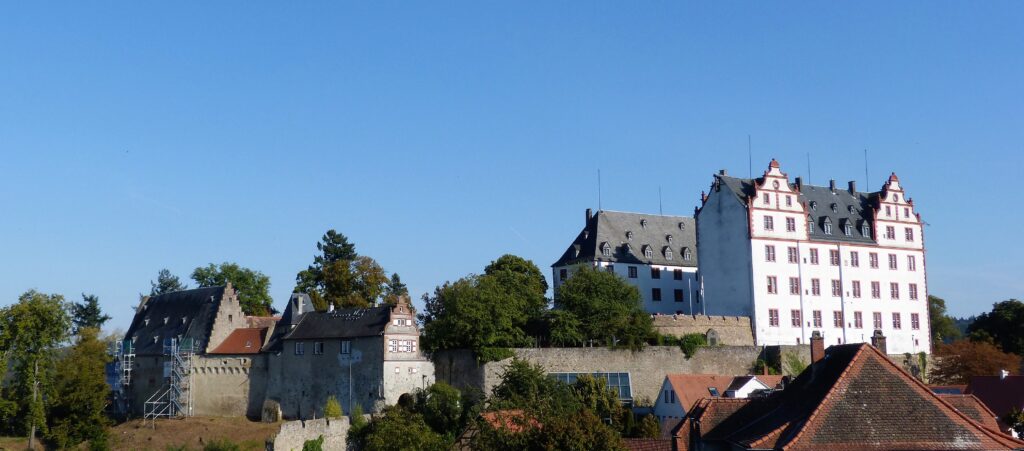
This one was built in the 16th century, a little bit later than most of the other castles we’d seen earlier in the year.
It’s state-owned now and houses a museum. You can host events at the castle including weddings.
We had an ulterior motive for stopping there. At the time, my friend’s boss and my former boss was Mr. Lichtenberger. A Lichtenberger would be a person from Lichtenberg so we had to stop and pick him up a souvenir.
Our next trip was to the Netherlands (country #8), where we saw Arcen Castle.
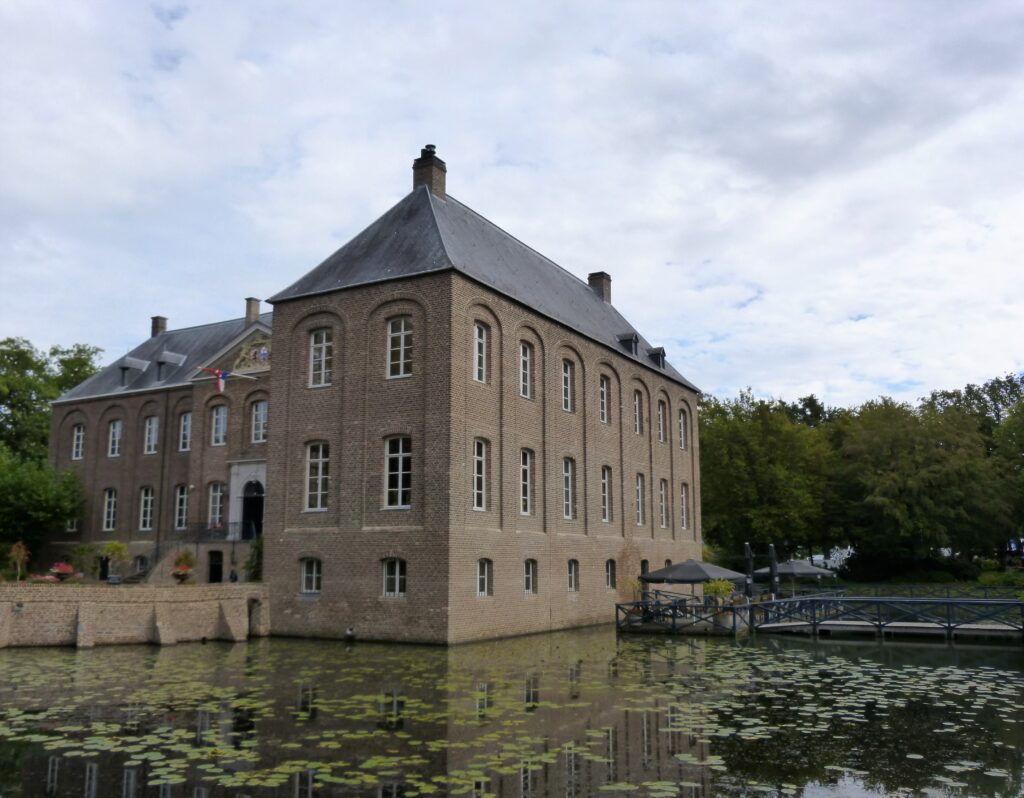
This one was built in the 17th century and looks more like a big house than a castle.
It’s part of an attraction called the Arcen Castle Gardens and the gardens are worth your time much more than the castle is.
We were there at the beginning of October and the gardens were still stunning.
A couple of weeks later we made a day trip to the absolutely adorable town of Monreal, where we climbed up to the Lowenburg Castle.

The first documented mention of the castle is in the year 1229.
This castle is completely in ruins. It’s free to visit and to climb up to the top of the remaining tower.
You can get an idea from the photo that it’s worth the climb for the views over the town.
There’s another castle called Phillippsburg that you can see from Lowenburg, but it was under scaffolding when we were there.
We spent the next weekend in Saarburg, Germany where we visited the aptly-named Saarburg Castle.
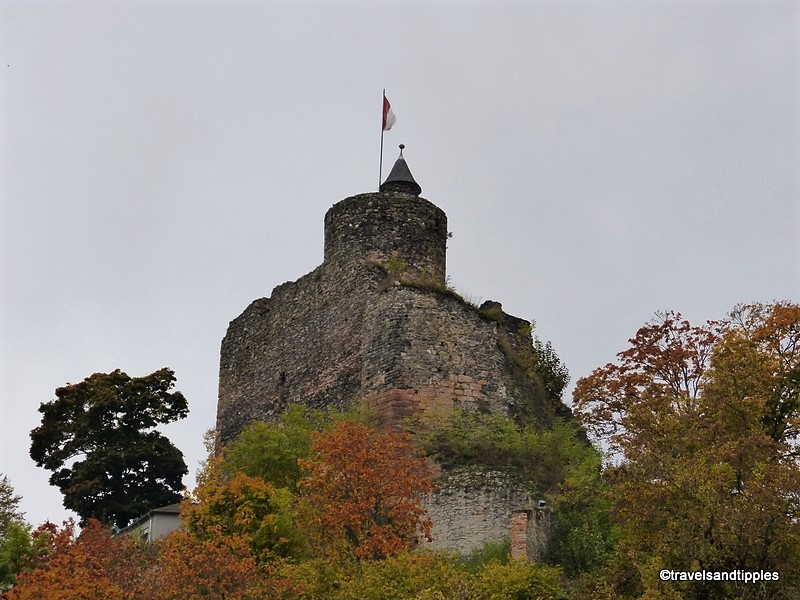
This was the oldest castle we visited and it was built starting in the year 964.
After being enlarged, destroyed and rebuilt numerous times over the next eight centuries, the castle was finally destroyed for the last time in 1794, by the French.
Over the next 70 years the castle fell into ruin until it was bought by the town in 1860.
This one is also free to visit and it’s free to climb the tower as well.
For our last castle of the year, it was back to the Netherlands in the middle of November.

At 13.50 Euro per adult to visit the Muiden Castle, we almost decided not to go in but then figured what the heck, we’re already here.
Doesn’t that just look like it’s straight out of a fairy tale?
The original castle on the site was built in 1280 but was destroyed within 20 years.
It was rebuilt around 1370 and today the interior has been restored so that the rooms look like they did in the 1600s.
So there you have it – one year, 28 castles, 8 countries.

